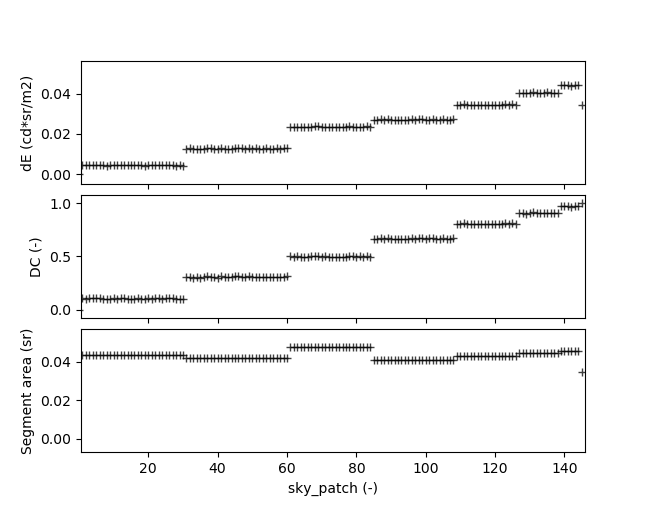Dear Radiance community,
I was trying to understand what is in the .mtx file (and also in the .dc file in Daysim) based on Sarith Subramaniam’s excellent Radiance tutorial for the 2-phase method. It says that these are the daylight coefficients. But when I plot the DC values for an MF1 Reinhart sky for an upward looking sensorpoint in an empty scene I get the uppermost plot:
It would be weird if the 145th top segment which is perpendicular to the sensor point direction vector had a lower DC than other sky segments which are not perpendicular to it. It seems that the angular size (dS) of the sky segments, which is not perfectly uniform (see lowermost plot), affects the “DC” value.
Based on the Tregenza or Reinhart definition of DC, to me it seems that the values in the .mtx (or in the .dc for Daysim) file are the dE (illuminance contribution of the given sky segment) in the following equation:
dE[cd*sr/m2] = DC[-] * L[cd/m2] * dS[sr]
If I divide the values in the .mtx file (uppermost plot) with dS and L (which is = 1) I get the middle plot. Here the top segment has a DC almost equal to 1 and the value is only dependent on the sine of the elevation angle as one would expect.
My questions:
-
Are the values in the .mtx and .dc files the dE, or I utterly misunderstand something?
-
And if it is indeed the dE, is there a nicer name for these values other than “illuminance contribution of the given sky segment”? Or it is generally accepted to call these DC regardless of technically not being the daylight coefficients?
